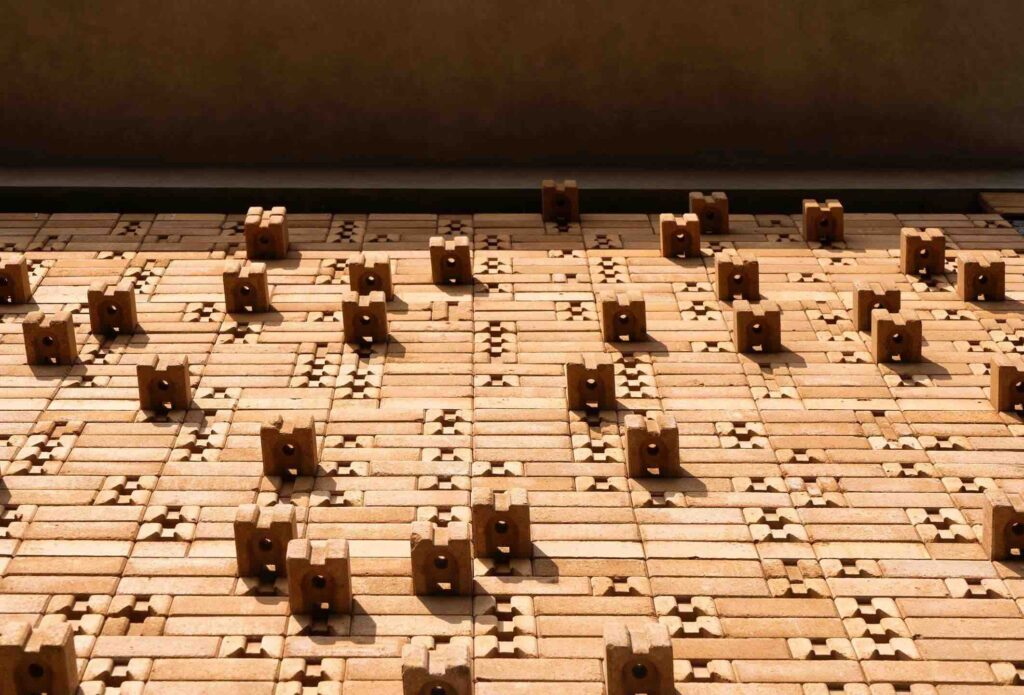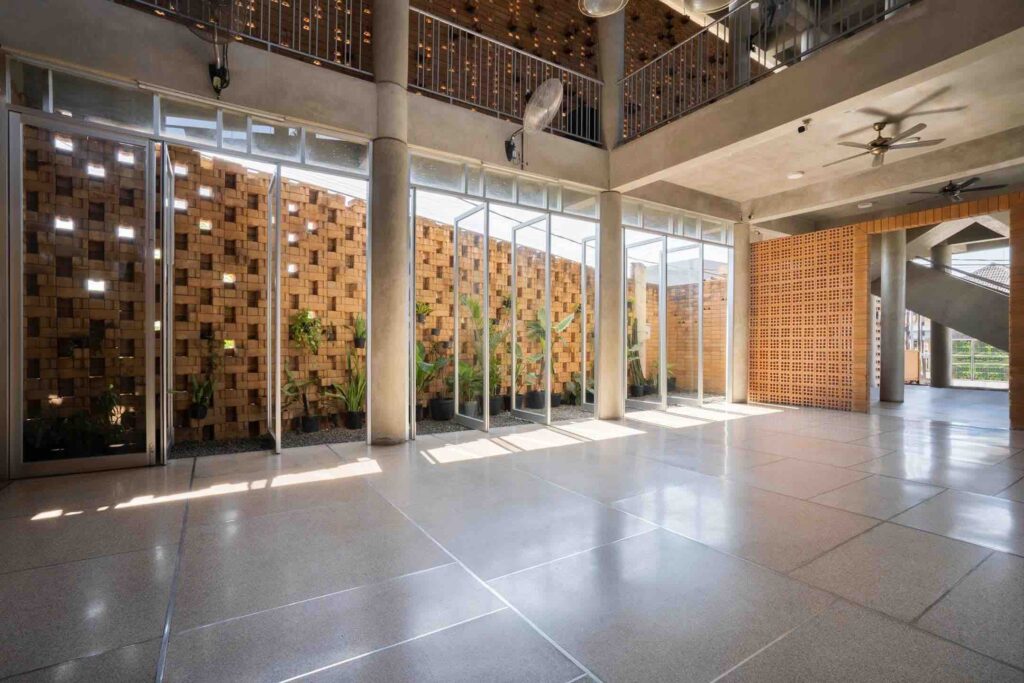The Lego Mosque, officially named Masjid Al Fattah, stands as a unique architectural achievement, constructed entirely from non-fired bricks crafted from laterite soil and air-dried in the sun, thus eliminating the need for energy-intensive kiln firing.
In Sidoarjo, East Java, a groundbreaking architectural masterpiece has taken shape—The Lego Mosque. Designed by Andyrahman Architect, this mosque is the first in Indonesia to be entirely constructed from non-fired interlocking bricks, known as “Lego bricks.” These bricks are made from laterite soil, a type of infertile soil abundant in East Java, marking a significant step toward sustainable and environmentally friendly construction practices.
Located in the village of Wage, Sidoarjo, the Lego Mosque spans an area of 345 square meters with a total building area of 610 square meters, accommodating up to 300 worshippers. The mosque is currently in the finishing stages of construction, with its overall concept rooted in the principles of Nusantara architecture, emphasizing the use of local materials and high craftsmanship.
RELEVANT SUSTAINABLE GOALS



Innovative Use of Local Materials
The Lego Mosque, officially named Masjid Al Fattah, stands as a testament to the innovative use of local materials. The mosque is constructed using 100% non-fired bricks, crafted from laterite soil, which is rich in iron and aluminum. Unlike traditional fired bricks, these bricks are pressed with a small amount of cement, approximately 5%, to form durable, interlocking units. This technique not only reduces the environmental impact by eliminating the need for firing but also utilizes a readily available resource, minimizing soil degradation.
The interlocking brick system, produced by Reka Indo of Sidoarjo, allows for the bricks to fit together like Lego pieces, creating a strong and stable structure. The mosque’s design is further enhanced by the use of non-fired terracotta waste in the construction of the ventilated blocks, known as rosters, which facilitate natural air circulation and light diffusion throughout the building.

Sustainability at Its Core
The non-fired bricks used in the mosque are not only aesthetically pleasing but also highly functional. The bricks absorb and release moisture based on the surrounding environment, making them ideal for tropical climates. The use of laterite soil, a residual soil that is typically infertile, helps preserve fertile land that would otherwise be used for traditional brick-making.
Moreover, the mosque’s design eliminates the need for air conditioning. The natural ventilation system, enabled by the strategic placement of rosters and the interlocking brick structure, ensures a cool and comfortable indoor environment. This approach significantly reduces energy consumption and enhances the mosque’s sustainability.
Cultural and Community Significance
Every corner of the Lego Mosque showcases unique artistic patterns, created by the careful arrangement of tectonic bricks. These patterns not only add to the visual appeal of the mosque but also highlight the potential for bricks to be used as a sophisticated and innovative element in modern design.
The mosque’s design draws inspiration from traditional Nusantara architecture, integrating local craftsmanship and materials into a contemporary context. The result is a harmonious blend of cultural heritage and modern innovation, demonstrating how traditional techniques can be adapted to meet the demands of sustainable architecture.

The construction of the Lego Mosque involved collaboration between various local experts and institutions. The rosters made from terracotta waste were produced by Jaya Mulya Roster, while the innovative non-fired bricks were a result of a collaboration between Reka Indo and PJB Jawa-Bali, as well as research led by ITS lecturer Ir. Vincentius Totok Norwarsito, MT.
The Promise and Challenges of Laterite Bricks in Sustainable Construction
Laterite bricks are an eco-friendly and affordable construction material, offering a versatile and sustainable solution for building durable homes, energy-efficient spaces, and visually appealing landscapes. However, the overall cost of construction with these bricks can be higher due to the need for additional measures to mitigate their disadvantages. As a result, it’s crucial to carefully evaluate the specific requirements of each project and local conditions. For those committed to green building practices, laterite bricks present an excellent option, provided their limitations are adequately addressed.
As a pioneering example of sustainable architecture, the Lego Mosque not only provides a place of worship but also serves as an inspiration for future architectural projects in Indonesia and beyond. By integrating traditional materials and methods with modern design and environmental consciousness, the Lego Mosque sets a new standard for what can be achieved in sustainable construction.
You may also be interested in :
Block Solutions’ Exceptional Journey: Rebuilding Communities And Pioneering The Future




